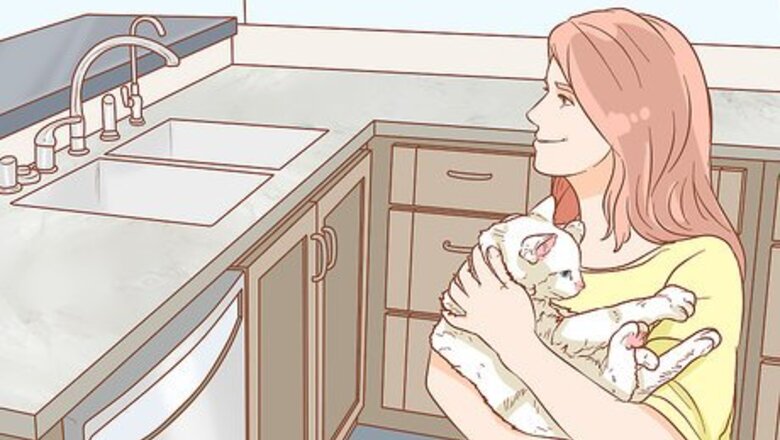
views
Getting Your Cat into Position
Know the risks if things go wrong. Have veterinary supervision for the first few times you express your cat’s bladder in case there are any problems. If you express its bladder incorrectly, your cat could suffer from discomfort or a ruptured bladder. If you aren’t able to fully express the bladder, your cat could get an infection or damage the urethra.
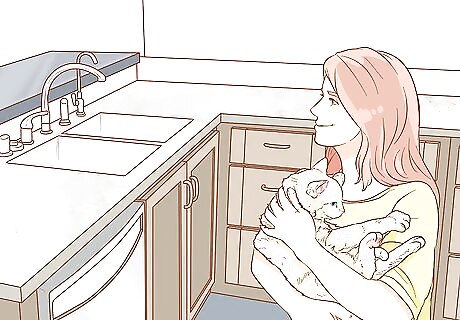
Carry your cat to your sink, toilet, or litter box. The easiest places to express your cat’s bladder are into your sink, toilet, or litter box. Which one you use is up to you, but most people use the one that is most accessible for them. Some people place a chair next to their toilet so that they can more comfortably hold their cat over the bowl. Tip: Try out using the sink, toilet, and litter box to determine which is easiest for you.
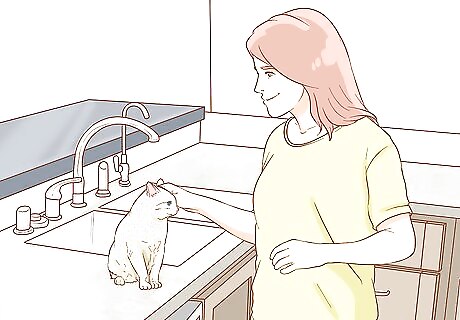
Calm the cat with petting and a pleasant voice, if necessary. Some cats will be resistant to you helping them urinate. If your cat is not happy about getting into position, take some time to calm it down and get it comfortable. Give it lots of pets and make it very relaxed before expressing its bladder. You can also use treats to make your cat happier and more willing to comply with what you need to do. Some cats can get distressed or aggressive when they have their bladder expressed. Talk to your vet to see if there are any alternatives you can do instead.
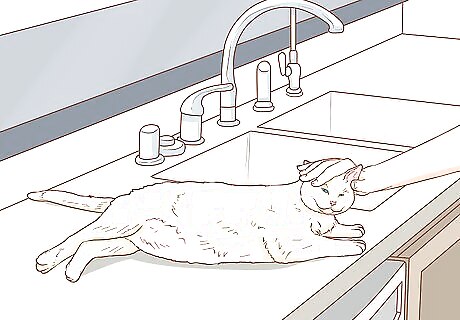
Choose the side-laying position if your cat is fully paralyzed. In this position, you will hold your cat so it’s lying on its side with its legs open. Its weight will be on your lap or on a counter while its rear end is held over the sink, toilet, or litter box. When expressing your cat in this position, you will press on the bladder with one hand and place your other hand on its back to hold it in place.

Choose the ragdoll position if your cat has use of its back legs. In this position, you will hold the cat under its front legs with its rear end hanging down and its belly facing away from you. This position works well for cats that are not fully paralyzed because they will have more muscle control in their core. When you get it into position, make sure you can hold the cat securely as you will hold the majority of the cat’s weight with one of your arms positioned right behind the cat’s front legs.
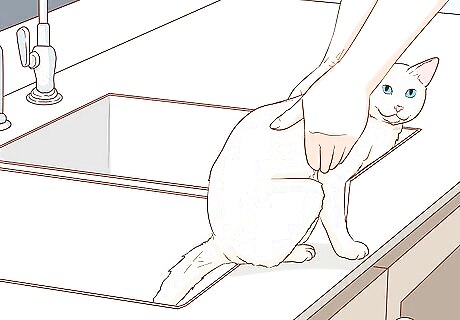
Make sure the cat’s rear end is over the sink, toilet, or litter box. Before you start expressing the bladder, make sure that the urine will go into the sink, toilet, or litter box. A cat’s urethra is located right below its tail, so that area of the cat’s body needs to be in place. When you first start expressing your cat's bladder there may be occasions where the urine doesn't go where you want it to. Just keep working on your technique, and before long you won't have any more accidents to clean up.
Pressing on the Bladder

Feel for the bladder in the lower abdomen. The bladder is located above the urinary opening but below the rib cage in the back of the belly. Press your fingers gently into the cat’s abdomen at the bottom of the belly and feel for a firm, round ball. The bladder has been described as feeling like a water balloon. Don’t press too firmly into the bladder as you are feeling for it, as this could release urine.Tip: It’s easiest to find the bladder initially by holding your cat on its back and cradling it on your lap or in your arms. If your cat loves its belly rubbed, that is a good time to find it as well.
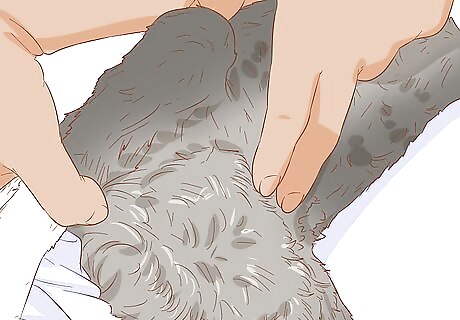
Squeeze the bladder with two fingers and your thumb. Position your fingers on one side of the bladder and your thumb on the other side. Use firm, even pressure to squeeze the bladder. As the bladder gets smaller as urine is released, you will need to reposition your fingers and thumb to keep pressure on it. This should not painful or uncomfortable for your cat, so if it shows signs of being in pain, stop what you are doing and reposition your fingers and thumb.

Express your cat’s bladder until urine stops flowing. Once you have squeezed the bladder once and urine stops flowing, let go of it, reposition your fingers, and give it another squeeze. If no more urine comes out, your cat’s bladder is fully expressed. Most cats will simply have a few squirts come out and then be done. They will not have a lot of urine come out if they are expressed on a regular basis. If you are unsure, let go of the bladder and then feel it again. It should be markedly softer than it was when you started expressing it. Never force the bladder empty if you feel resistance. Contact a vet to discuss options and find any problems.

Clean up any urine that has gotten on your cat. After your cat has urinated, wipe up any urine that has gotten on its fur with a piece of toilet paper. Also do a quick wipe of the area right around the urinary tract opening. In many cases, a cat that needs to be expressed will not have the mobility to clean its body after it goes to the bathroom.
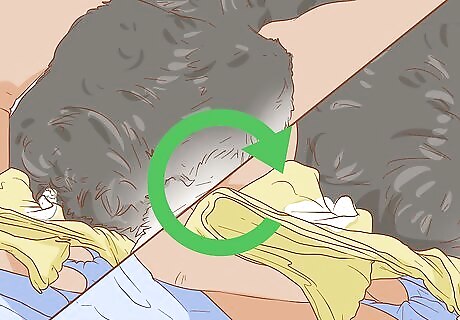
Repeat this process about 4 times a day. A cat that is incontinent will need to be expressed on a regular basis so that they do not leak urine or so that their bladders do not get overly full. Tip: Doing this 4 times a day takes a lot of time, so prepare to make a big commitment when taking this process on.
Determining If a Cat Needs Help Urinating
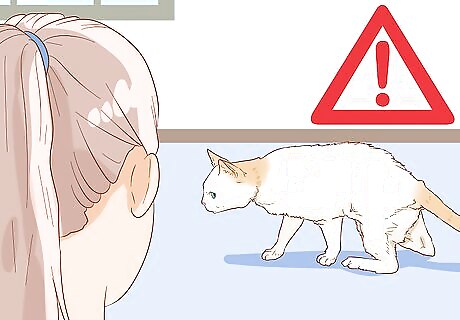
Assess whether your cat has mobility issues. When you watch your cat walk around, keep an eye out for abnormal movement, especially if they're having difficulty moving their back legs. Many cats that need their bladders manually expressed have a paralyzed rear end. If your cat can’t use its rear legs, it’s likely that the muscles around the bladder are also not working. Most cats that have mobility issues are either born with a problem, get an injury, or develop problems in old age. If your cat if in mid-life and isn’t injured, it likely won’t have paralysis in its hind legs. Tip: If you see this kind of problem developing, take your cat to a vet immediately.

Look for signs of a urinary blockage or other similar issues. If your cat has not been going to the bathroom regularly, is leaking urine, or seems to be in abdominal pain, take it to a vet right away. There could be a blockage in its urinary tract or another problem that is making urination difficult, which could be a threat to your cat's life. Recovery from a urinary tract blockage is one of the most common reasons that you might need to express your cat.
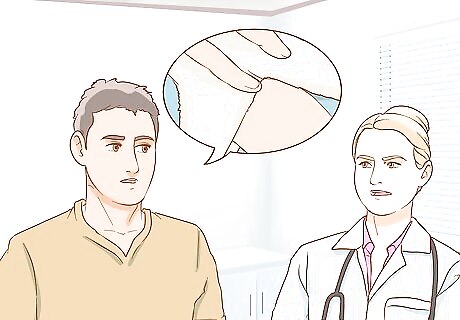
Talk to your veterinarian about whether your cat's bladder needs to be expressed. In most cases, it will be a veterinarian that tells you that you need to express your cat’s bladder. However, if you spot the signs of mobility issues or urinary tract problems you need to bring it up with your vet. If your vet tells you that you need to express your cat’s bladder, they should follow that suggestion by showing you how to do it. If they don't offer to show you how to do it, ask them to. Watch how they do it, try to do it while in the vet’s office, and ask your vet as many questions as you like. Determine if you have the time and energy to commit to expressing your cat’s bladder regularly if it can’t urinate. If they get distressed easily or you can’t take care of it yourself, euthanization may be the best option so the cat doesn’t suffer.










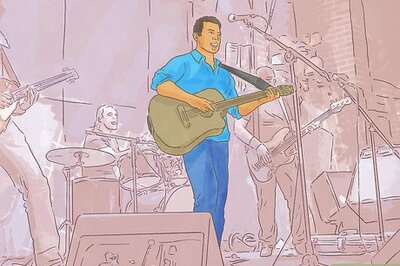




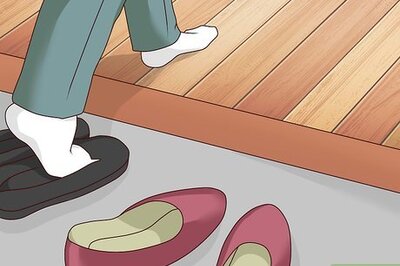


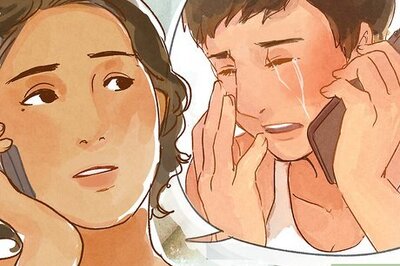
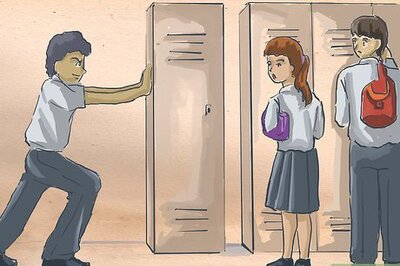
Comments
0 comment